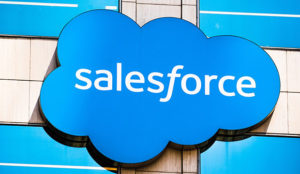I’ve been on and off trying to get a handle on Zoho for a long time, feeling that calling it an SMB solution didn’t do it justice, but I was stumped. The company provides roughly 50 apps and more services and widgets in a product set that culminates in Zoho One — which Zoho bills as “The Operating System for Business.”
My biggest challenge has been how to categorize it, because while it has a lot of CRM/CX and back-office accounting and finance, neither fit well enough to me.
Zoho’s solutions seem to be aimed at the middle of the market, though it has made moves in the direction of the enterprise. Still, if you’re a Global 500 company you buy Microsoft, Oracle, Salesforce, or one of the other CRM vendors — and if you want ERP you go for Oracle or NetSuite or Microsoft or SAP.
So, what was their angle? In my travels I’ve found companies of varying sizes and in multiple industries that have those other brands along with Zoho, because Zoho integrates and does things that those vendors don’t. It took a while for me to understand that was the point.
Zoho is certainly capable of running a small or medium business and it really shines when an organization requires an app or a module that needs to be built from scratch.
Actually, in this case, “from scratch” doesn’t mean starting from nothing. There’s always a Zoho module or three that can converge on a business problem to deliver a just-right solution with a little configuration and workflow help. The platform includes the newly released no-code tool, Zoho Canvas, a low-code tool, Zoho Creator, and a pro-code platform, Zoho Catalyst.
‘Rip and Replace’ Alternative
What I realized finally is that Zoho is a whole company dedicated to an approach that I’d been calling the “surround strategy” for a long time, but on a smaller level.
Surround strategy is the antithesis of rip and replace. Rather than replacement, a business can move parts of its workload from some workhorse system, say ERP, to Zoho — where things like pre-built reports and Zia, an AI-based digital assistant, can help business users interrogate data stored on the mothership.
I’ve seen this before but not at this level. Typically, many of my clients will embrace a surround strategy on the way to full replacement of an older system. But Zoho seems content, for now at least, to be the system of engagement for other, better known, systems of record.
Moreover, a typical rip and replacement happens around one system such as CRM or ERP, but often not both at once.
Departmental Solutions
Zoho deployments might start with a departmental solution but very quickly the deployment spreads and often that spread is organic.
For instance, Zoho People is its HR solution. But is HR a front- or back-office app? We know it’s both and where it sits is a decision rooted in company history. As a result, HR may not get all the love it deserves because organizationally it’s treated as an orphan. That’s a prime target for Zoho because, more than most companies with one foot in each camp, they don’t obsess about the front- to back-office divide.
Much the same can be said about collaboration. It’s still a new concept within most organizations and most vendors that I know treat collaboration as a monolithic system.
Zoho, on the other hand, checks the collaboration box with Cliq, then follows up with Projects for, yes, managing projects, Workdrive for storing project documents in one place, and Sites which can enable a business to generate a portal for the project possibly involving the customer.
Okay, Zoho is not the only company with this kind of functionality, but it does a lot to bring it all to the small, medium, and large user starting at $37 per month. Forgive me for perseverating, but all this is context for Zoho’s recent product announcements which are too numerous to recount here — so I’ll just provide a couple I find interesting.
Zoho One Platform Offerings
First thing to note is that all of Zoho One is built on one platform, no integrations required, and data really shows up seamlessly in all of the modules. The platform includes the aforementioned Zoho Canvas, Zoho Creator, and Zoho Catalyst.
One of my favorite new additions is the Org Dictionary — an organization-wide service that offers a central dictionary for the entire organization. It automatically incorporates the organization’s employee names and other sources to offer a central, consistent, dictionary across various Zoho applications and users. Analytics figures out who works with whom, what they do, and how they tree up, to keep teams and projects organized.
Then there’s Zoho Commerce which, as the name implies, enables retailers to build online shops with the tools needed to construct a website, accept orders, track inventory, process payments, manage shipping, market their brand, and analyze data. Zoho Commerce also integrates with third-party payment gateways.
There’s a whole raft of functionality made necessary by working away from the office:
- Mobile Application Management — enables admins to set up and manage employee’s devices and standardize on permissions, policies, locking and wiping devices remotely
- Zoho Learn — a learning management and course builder
- Zoho Lens — for collaboration and communication including augmented reality annotation
- TeamInbox — to cut down on the duplication of messages and lost information for project teams or any group of people on a task
I’m not going into excruciating detail about CRM or ERP because they are fine and because Zoho’s surround approach to its customers is what really stands out.
Maybe we weren’t paying enough attention earlier, it seems like Zoho has found a way to be not simply the operating system for business that it claims to be; but instead, I think it has become the system of engagement for a lot of businesses and an important common denominator.


























































